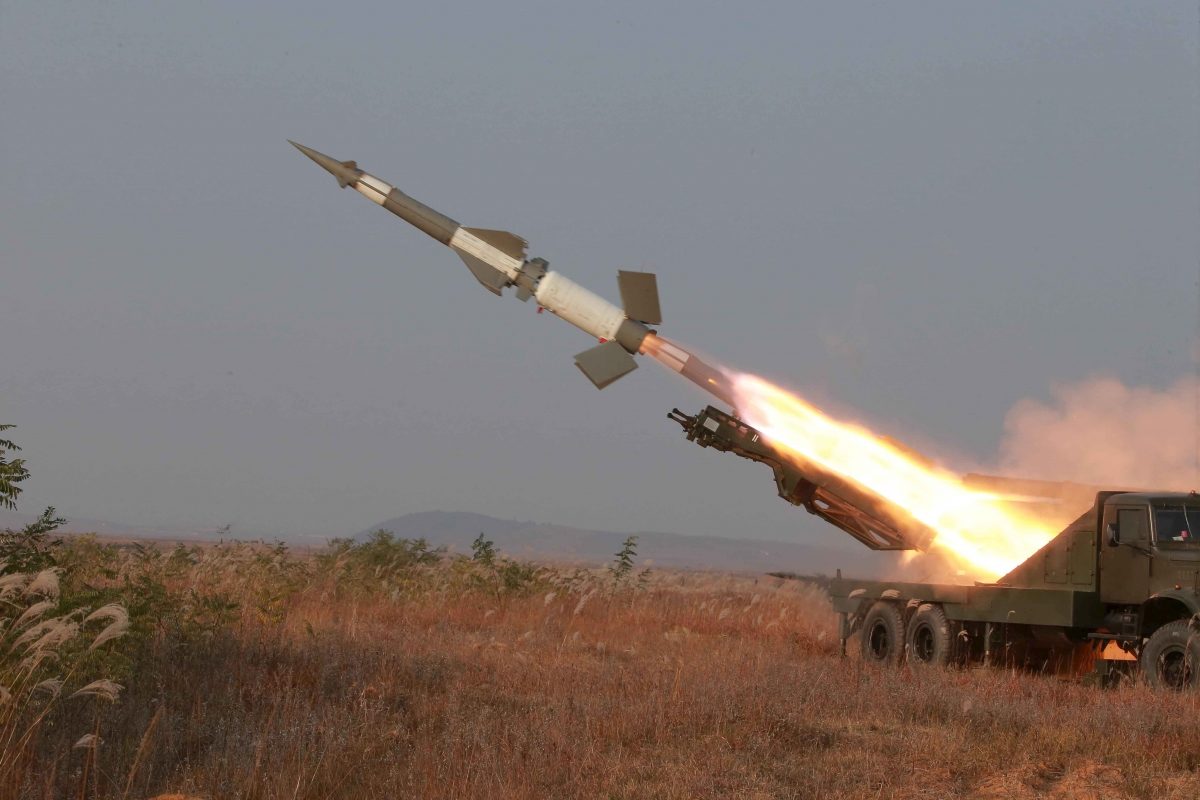Picture – KCNA.
North Korea claimed on Wednesday (Jan 6) that it had tested a hydrogen bomb, the most powerful kind of nuclear weapon. But skepticism arises whether it was actually a Hydrogen Bomb?
North Korea’s announcement on Wednesday coincided with a suspicious 5.1 magnitude quake near the underground site where North Korea has previously conducted three nuclear tests in 2006, 2009, and 2013.
The White House said Wednesday its initial analysis of the blast in North Korea is “inconsistent” with claims of successful hydrogen bomb test. Beijing’s state media has also said it “cannot support” claims of an H-bomb test, and that further analysis required. When asked about skepticism of whether the H-bomb test was actually successful, North Korean officials were defensive.
Before analyzing Whether or not North Korea’s claim is true, we need to understand some interesting things on Nuclear Weapons.
In the conventional understanding, there are two types of nuclear bombs: fission and fusion. Although they have nearly identical names, there is almost a 180-degree difference in their approach to blowing stuff up. Fission weapons use a particular isotope of a heavy, sort of unstable “metallic uranium or plutonium” (both radioactive). A trigger is used to kick off a chain reaction that splits each atom of stuff into two smaller atoms, neutrons, and energy. The neutrons smash into other atoms, causing them to split. Basically, the atom-splitting turns into a chain reaction splitting off even more atoms which throws off tons of energy. Atomic bombs or A-Bombs are examples of fission based nuclear weapons.
But in fusion, instead of splitting atoms, you go on combining lighter particles, to make heavier elements thereby releasing a huge chunk of energy and neutrons which could make other lighter particles fuse thereby inducing a chain reaction. The trigger in this case is an implosion type fission bomb (as combing lighter elements need tons of energy). Hydrogen bomb (H-Bomb) is an example of Fusion based nuclear weapon.
In this telling, fission weapons (A-bombs) are considered small or low-yield, meaning they generate explosions equivalent to tens or hundreds few kilotons of TNT. Fusion weapons (H-bombs) are much bigger weapons with explosive yields tens or hundreds of times larger, reaching up to tens of millions of tons (megatons) of TNT. “Tsar Bomba” (AN602 Hydrogen Bomb) by Soviet Union whose test remains the most powerful artificial explosion in human history generated about 50 megaton TNT. Castle Bravo by the USA whose test the most powerful nuclear device ever detonated by the United States is about 15 megatons of TNT. Also from a design standpoint, H-bombs are, in a sense, both more efficient and more complex.
But wait! Before jumping into any conclusions, there is one more thing to be known that there are many weapons developed using a hybrid of both fission and fusion models. So the very definition of the “Hydrogen Bomb” is colloquial. Some analyst would call something as Hydrogen bomb based on whether it gets a big chunk of its explosive energy from fusion reactions. Others would consider the presence of hydrogen isotopes for the bomb part, regardless what contributes what portion of the final energy. Let’s call the former one “Big Original H-Bombs” and the latter “Boosted A Bombs with Hydrogen Isotopes”. But a boosted atomic bomb has nowhere near the destructive power of a hydrogen bomb, and it is not considered a thermonuclear weapon.
If you run a quick-and-dirty simulation, a 10 kiloton North Korean nuke detonated 1,000 meters over downtown Seoul produces 78,000 fatalities and somewhere around 270,000 estimated injuries. But if you hit that same target with a good old-fashioned high-yield weapon of 1 megaton, you get something closer to 1,625,000 dead with another 4,725,000 injured.
So the problem has to be rephrased. Whether North Koreans had succeeded in experimenting with a smaller Boosted A-Bomb or a big one? While it is improbable to say that North Koreans had a big one, there are assurances that it might have tested a smaller one, one that are easier to construct in comparison to the big ones. It is possible that North Korea tested a boosted atomic bomb, a weapon whose destructive power is increased by injecting tritium, a radioactive form of hydrogen. This can help reduce the size of a weapon while keeping the yield high. That may have been what the North Koreans were trying to achieve as it could help them shrink the size of the warhead so that it could fit into the nose cone of a missile. Here are few reasons why North Korea might have tested a boosted atomic bomb.
The yield, or total energy released by the weapon, was close to that of North Korea’s previous three tests of atomic bombs, which are simple atomic missiles. Early indications are that the test had a yield of about 6 kilotons, or the explosive force of 6,000 tons of TNT. That is a smaller yield than North Korea’s last test. Even a failed H-bomb test would have resulted in an explosion of 10 to 50 kilotons.
Big H-bombs require huge rockets, which North Korea doesn’t really have. If the North Koreans really have big H-bomb, then, in effect, they don’t have any nuclear missiles, as none of their missiles have the ability to sling a giant bomb halfway around the planet. On the other hand, they could conceivably use a mediocre missile to launch a smaller, lighter nuclear device, effectively turning their missiles into nuclear missiles.
For now, the exact nature of North Korea’s latest weapon remains unclear. On Friday, the Korea Institute of Nuclear Safety failed to reach a conclusion after an analysis of air off South Korea’s east coast. It said that the amount of radioactive elements detected was too small to confirm the detonation of a nuclear device.
The agency responsible for monitoring atomic blasts, the Comprehensive Nuclear-Test-Ban Treaty Organization, currently has 42 certified seismic stations and over 100 auxiliary stations distributed around the globe. Because seismic signals bounce through the Earth, not only did Russia and Japan pick up North Korea’s event, but so did the US.
Besides looking at the seismic signal’s strength, scientists have a hard time telling whether an explosion was chemical or nuclear. This is because with enough TNTs or other conventional explosive, a country could make a blast that looks a lot like nuclear.
The only way to be really sure about what happened is to detect specific trace amounts of radioactive material produced by the blast. But since the North Koreans held their test below ground thereby avoiding spewing fallout everywhere. All of those useful radioactive clues are trapped deep within the Earth.
Nevertheless, even a failed hydrogen test would be an advancement to North Korea. It might (and certainly would) try testing another one. And one day, if it succeeds in developing Hydrogen bombs, that could be bad news for world peace. With China (N.Korea’s only ally) furious about the test, US might play with the Chinese card along with implementing restriction sanctions. But it’s up to time to decide what happens next.
Sources :
Nuclear Weapon Impact Simulation from
http://nuclearsecrecy.com/nukemap/
————————–
Written by S G A Thomas, Asso. Editor.





